I recently bought several sheets of 6mm (1/4") of Okoume plywood from Noah's Marine. After receipt I discovered it was from China. I was concerned that it might be crappy counterfeit stuff. It was supposed to be BS 1088 quality. Noah's web page states that it has water proof and boil proof glue. I posted a query about Chinese Okoume in the wooden boat forum. The many responses were nearly uniform: it's no good, don't use it, one person traded Okoume in for fir plywood, the BS 1088 standard is meaningless, etc. One person did state that Noah's was an old and reputable company. Somewhat dismayed I decided to test it myself. Simultaneously I would also test marine grade fir and luan underlayment.
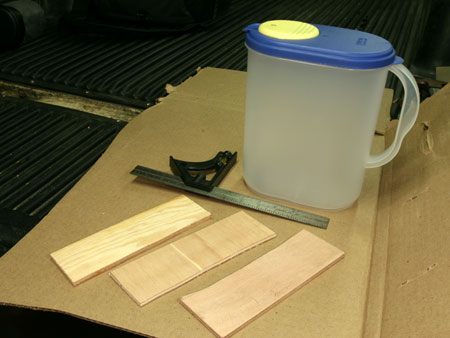
Figure 1
The 3 pieces were approximately 2.5" X 8.5". In figure 1 from left to right they are marine fir, luan underlayment and Okoume. I decided to submerge the pieces for 24 hours in a plastic container completely filled with water. I did leave the spout popped open so the container was not airtight. See figure 2.

Figure 2
Upon removal the white putty filler on the luan underlayment had softened and could be easily scrapped off with my finger nail. See figure 3. After drying indoors for 24 hours the marine fir developed a permanent warp and a noticeable ply separation. There is a barely noticeable separation to the right of the more obvious one. See figures 4 and 5. A few more cycles of 24 hours of soaking and 24 hours of drying were followed by one hour of boiling. After boiling I left the pieces in the pot over night.
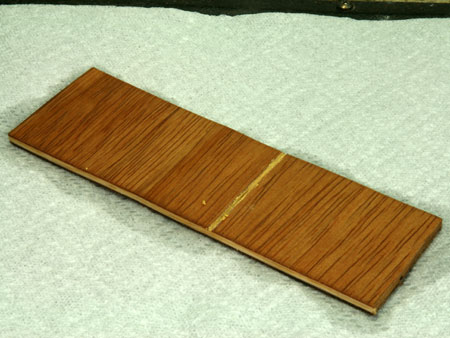
Figure 3
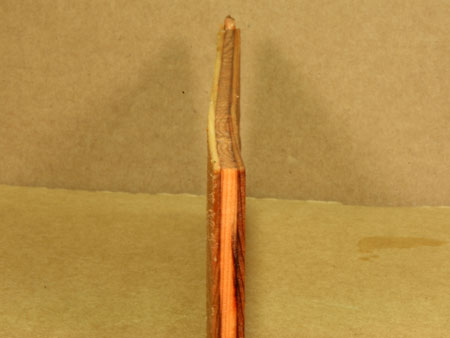
Figure 4
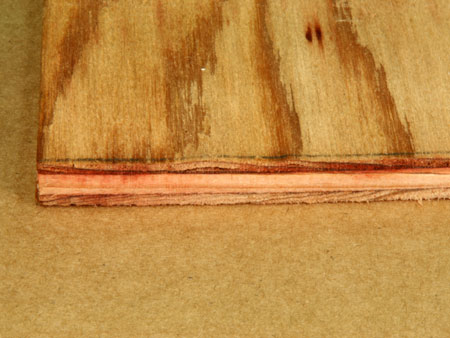
Figure 5
When I removed the pot's lid the following day, I was surprised to see all 3 pieces at the bottom of the pot. They were completely waterlogged. The Marine fir was
looking quite bad at this point. The ply separations had become horrible. See figure 6. The grain of the wood was raised very high. See figure 7. The grain of the luan underlayment and Okoume was not raised and neither was warped.
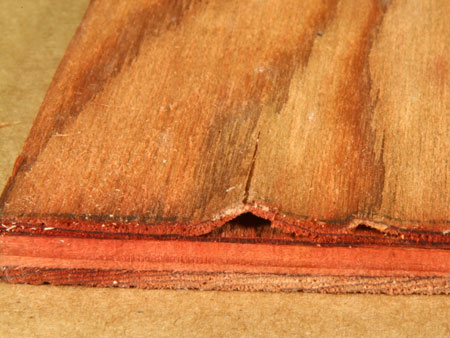
Figure 6
While the luan underlayment faired pretty good, except for the putty failure, there is something else that is worrisome. Check out figure 8. If that void passes beneath a putty filling that gets wet then you will end up with water inside your plywood. I believe this will soon prove disastrous especially if you live in a climate where the boat gets frozen. So, if you use luan underlayment make sure it has no putty filling and check the edges for voids. The interior can usually be checked for voids in a dark room or outdoors after dark by using a very bright light behind it. A flashlight with 4 D cells works for me. The light will shine right through it and the void will be obvious. Perhaps you will be able to get a replacement sheet if the one with voids is uncut.
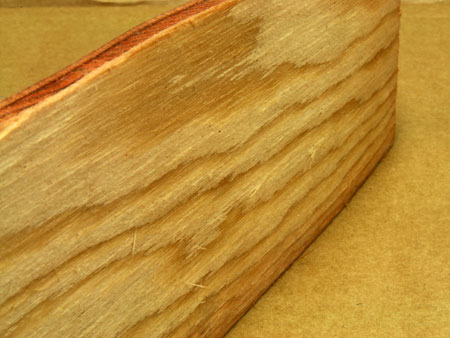
Figure 7
I happened to be shortening a sheet of half inch pressure treated plywood a few days after completing this plywood test. I noticed the end piece I cut off had a long wide putty patch. I placed a section about the same size as the test pieces under water overnight. When I removed it 24 hours later the putty was still hard.
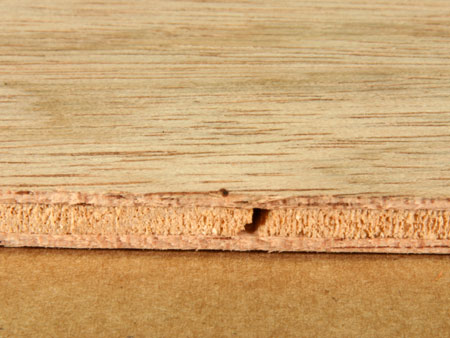
Figure 8
When it comes to price, the luan underlayment goes for about $13 to $15 at Home Depot, Lowes, etc. The Marine fir cost me $40 per sheet here in Jacksonville FL. I purchased the Okoume from Noah's in Canada. I ordered 30 sheets at a cost of $44 per sheet. With shipping I paid $55 per sheet. The normal price locally is $90 to $100 per sheet plus 7% sales tax. I didn't need 30 sheets but the excess went pretty quick after advertising on craigslist. Marine fir is no longer on my list of wood suitable for boat building. Okoume is at the top of my list.
***** |

